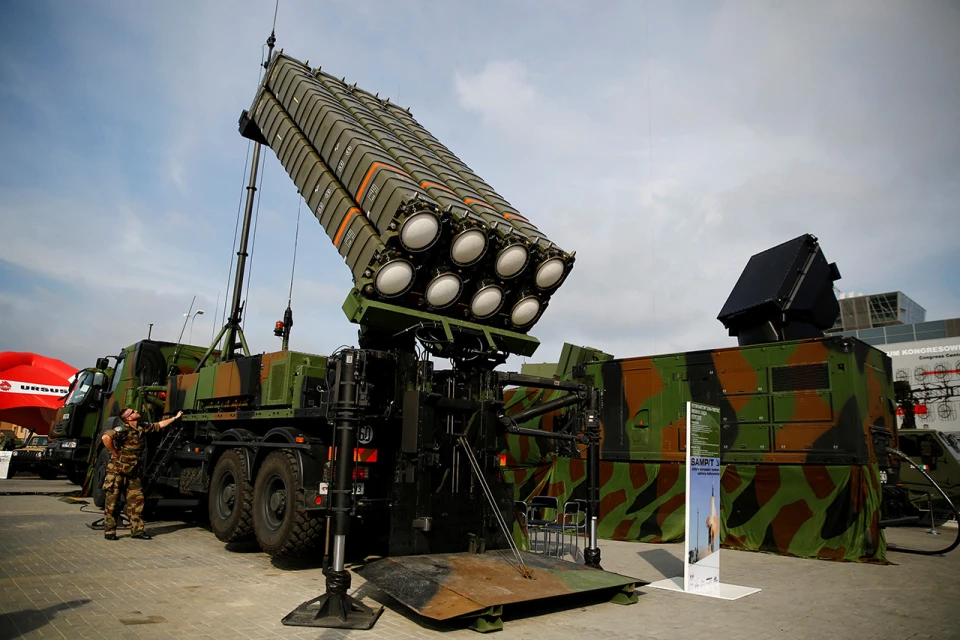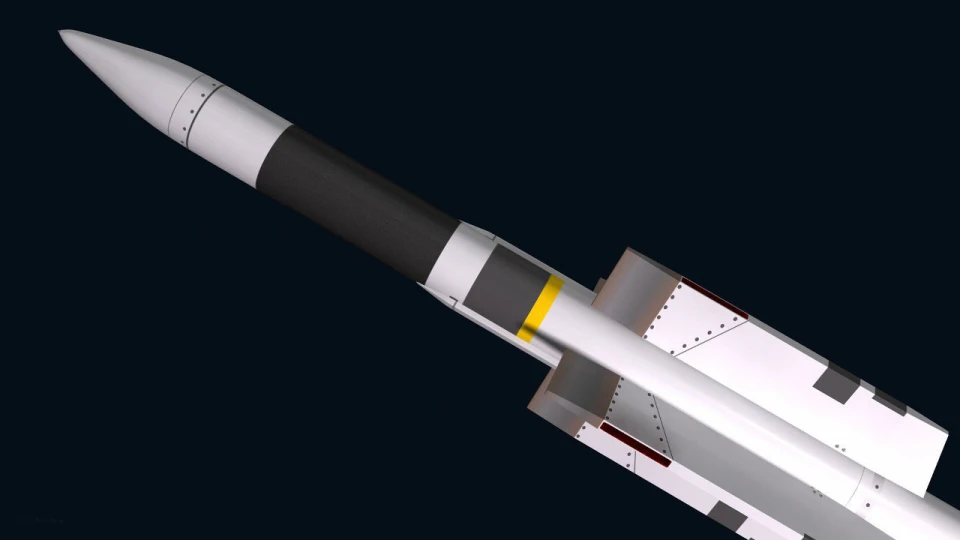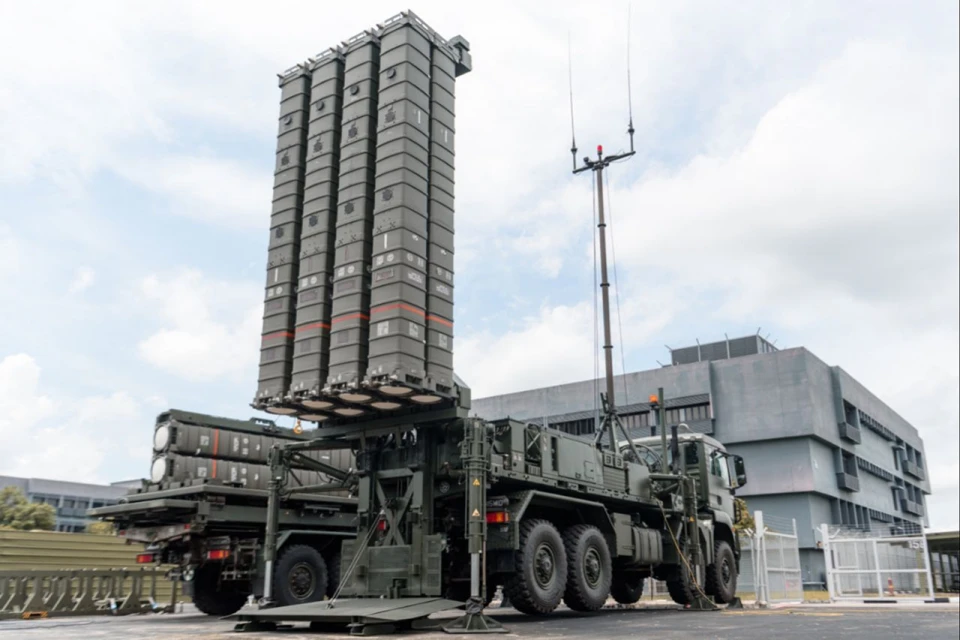
100% efficient: What are Aster 15 missiles, and when can France, Italy send them to Ukraine?
In February 2023, Italian Prime Minister Giorgia Meloni announced a Ukraine support package that included SAMP/T air defense systems. These systems use Aster family missiles. However, Ukraine has not yet received any Aster 15 missiles specifically designed for naval use
What is the SAMP/T system that uses Aster missiles?

SAMP/T is a ground-based air defense missile system designed to protect critical targets from large-scale attacks by aircraft, cruise missiles, and ballistic missiles. Originally intended to defend moving mechanized units, it has proven highly effective in countering aircraft, drones, cruise missiles, and short to medium-range ballistic missiles in all weather conditions during testing and operations.
The system includes a radar station, a combat control cabin equipped with control system equipment, and self-propelled launchers with modules capable of launching 8 Aster family missiles. It boasts rapid response capability and a high rate of fire, enabling it to launch 8 missiles within 10 seconds.
According to ArmyInform, missile guidance involves two stages: initial control via a command and inertial system for most of the flight path, and autonomous guidance using information from the homing head in the final stage. The warhead is of the high-explosive fragmentation type.
Defense Express highlights another advantage of the SAMP/T system. Unlike the Patriot system, which reportedly requires 90 personnel per standard fire unit, SAMP/T operates with just 14 personnel per fire unit equipped with four launchers. This significantly reduces the manpower needed and facilitates quicker mastery of the system. Its digitalization and automation also simplify operation, making it the "European equivalent of Patriot."
In early 2023, following the announcement of the system's supply to Ukraine, the Italian outlet Il Fatto Quotidiano published an article detailing the training of 20 Ukrainian operators at a special training ground in Sardinia. The system was delivered in summer 2023, and discussions this summer focus on the provision of another complex.
Aster missiles: what they are and how they work
All versions of the Eurosam air defense system use Aster missiles, which are unified across platforms.

According to ArmyInform, the Aster family anti-aircraft guided missile (AAGM) differs only in terms of the launchers: Aster 30 for the SAMP/T system and Aster 15 for ship-based systems.
The development of Aster missiles began in the 1990s. In July 1995, the missile successfully intercepted a target at 15 km altitude traveling at 1,000 km/h during initial tests. A year later, testing commenced on the active radar homing system for the Aster 15 during the final stage of its trajectory. By 2001, Aster missiles were operational on the French nuclear-powered aircraft carrier Charles de Gaulle. In November 2003, Eurosam secured a €3 billion Phase 3 production contract, marking the start of full-scale production and exports to France, Italy, Saudi Arabia, and the United Kingdom.
Aster missiles are designed for precision hits using a hit-to-kill method with gas-dynamic proportional lateral control. Aster missiles deployed with SAMP/T systems have successfully intercepted tactical ballistic missiles within a range of 15 to 35 km. In a significant 2013 test, an Aster 30 interceptor missile intercepted and destroyed a missile launched from an aircraft after its ballistic flight of nearly 300 km.
The claimed range for intercepting aerodynamic targets with the Aster missiles is 120 km according to the manufacturer, but this distance is under ideal conditions. It may be shorter when targeting low-visibility or low-flying objects.
According to ArmyInform, "the missile's engine, located near its center, starts up 1-1.5 seconds before reaching the target, achieving the required thrust almost instantaneously (within 0.02-0.03 seconds). This rapid response ensures high guidance accuracy (with a root mean square error of less than 1 meter) and allows for a lighter warhead, reducing the missile's launch weight."
There are three main versions of Aster missiles: the Aster 30, a long-range missile already transferred to Ukraine; the Aster 15, designed for maritime use with short and medium-range capabilities; and the Aster Block 2 BMD, an anti-atmospheric interceptor missile.
Aster 30 (Land-based Missile):
- Body length: 4.9 meters
- Launch mass: 450 kilograms
- Range: Up to 120 kilometers
- Flight speed: Mach 4.5
Aster 15 (Sea Missile):
- Body length: 4.2 meters
- Launch mass: 310 kilograms
- Range: Up to 30 kilometers
- Flight speed: Mach 3
Why Ukraine needs Aster 15

In the spring of 2024, an incident in the Red Sea highlighted the need for additional SAMP/T complexes, including not just Aster 30 but also Aster 15 missiles.
On March 21, the French Navy frigate Alsace (D656) intercepted three Yemeni Houthi ballistic missiles targeting civilian vessels using three Aster 15 anti-aircraft missiles. Remarkably, all three ballistic missiles were successfully neutralized, achieving a 100% interception rate.
"This marked the first combat use of French Aster 15 anti-aircraft missiles against ballistic missiles, showcasing their effectiveness in real combat scenarios akin to the SAMP/T air defense system, but adapted for naval operations," Defense Express reported.
Previously, in the same region, French forces also used Aster 15 missiles to down inexpensive Houthi drones. Each Aster 15 missile costs over a million dollars, prompting Defense Express to describe the incident as a shift in Western air defense strategy. Traditionally, Western countries compared the cost of an airborne threat with the expense of neutralizing it.
The Defense News portal reports that French Vice Admiral Emmanuel Slaars confirmed the interception of Houthi drones using expensive Aster missiles. The French military justifies this expense by considering not just the missile's cost, but also the value of the protected asset. In essence, they believe it's worthwhile to use costly missiles if it means safeguarding much more valuable objects.
The delay in providing Aster 15 missiles to Ukraine is mainly due to production challenges rather than cost concerns. As of the start of the full-scale invasion, it took up to 40 months to produce Aster 15 missiles.
On February 24, 2023, French Defense Minister Sebastien Lecornu announced a new defense strategy aiming to increase production and shorten the production cycles of critical munitions. They plan to reduce the production time for Aster family missiles to 18 months.
This is significant because in January 2023, Italy and France signed a $2 billion contract with MBDA to purchase 700 Aster missiles for Ukraine.
In general, France is significantly ramping up its weapons production capacity. From producing just 500 155-mm projectiles in 2017, the country plans to manufacture 100,000 by 2024, with 80,000 earmarked for Ukraine's needs, according to Defense Express. Opex360 notes that France is also accelerating the delivery of Aster family anti-aircraft missiles. Originally planned for 2026, the first deliveries are now expected as early as 2024.
It's likely that France will prioritize shortening the production cycle for the more widely used and less expensive Aster 15 missile. Analysts at Defense Express suggest that production of the land-based Aster 30 may receive lower priority compared to the naval version, which is installed on ships in eight countries worldwide. Regardless of the modification, Aster missiles have proven effective in intercepting ballistic targets.
- News











































